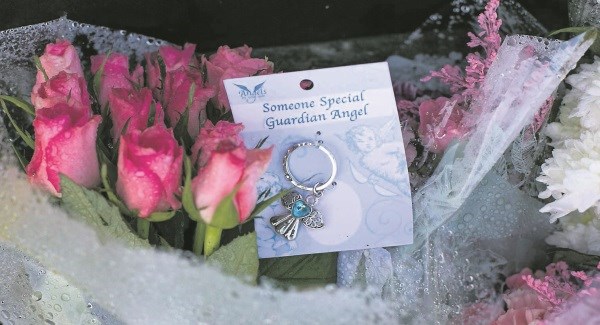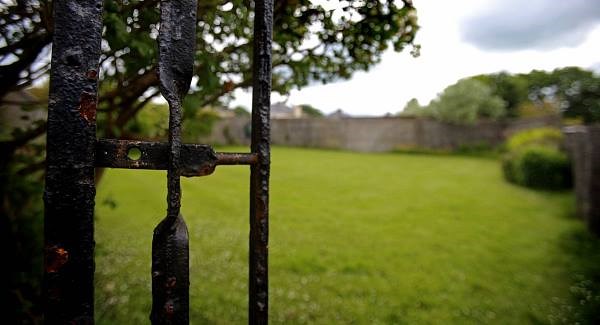Archdiocese of Tuam Failed These Children
By James M Smith
The Archbishop of Tuam, Dr Michael Neary, is “horrified and saddened” by revelations confirming the presence of significant human remains, thought to be those of some 796 children, buried in an underground sewage treatment works at the former Sisters of the Bon Secours’ Children’s Home in the town. Speaking last Sunday morning, Dr Neary reflected on a by-gone era: “This points to a time of great suffering and pain for the little ones and their mothers. I can only begin to imagine the huge emotional wrench which the mothers suffered in giving up their babies for adoption or by witnessing their death.” Media coverage of the story in the intervening days suggests that the “time of great suffering and pain” continues unabated. The point here is not to scapegoat one bishop. That said, it is telling that the Archdiocese has yet (at the time of going to print) to address the issue on its website, despite running a “breaking news” banner on its homepage. Surely the time for dissembling on the part of the hierarchy is long passed: there are 798 deaths in a religious institution for which, to date, two graves in a Catholic cemetery have been located. Scientific evidence indicates that many of the remaining 796 bodies were callously interred in a manner unimaginable to all decent people. The fact that a Catholic cemetery adjoined the former institution only heightens the pain.
Additional testing may confirm the numbers of bodies in, what Taoiseach Enda Kenny refers to as “a chamber of horrors,” but regardless of whether this ends up being 50 or 250 or all 796 remains, the wider world is asking how did this happen? All of it predates Dr Neary’s accession to Archbishop - the institution closed in 1961. And, Galway County Council owned the property. The home operated as a Public Assistance Authority institution accepting mothers and babies chargeable to Co. Galway and Co. Mayo local authorities. It was inspected by the Department of Health. And, it was managed by the Sisters of the Bon Secours, a French religious congregation with a degree of autonomy in how they managed their affairs. The State’s Mother and Baby Homes Commission of Investigation, which conducted the tests confirming the presence of human remains, will continue its work to help better understand what happened at Tuam and similar institutions across Ireland. But, what role did the Archdiocese, more specifically Archbishop Thomas Gilmartin (1918-1939) and Archbishop Joseph Walsh (1940-1969), play in its operation. Did they know about the high infant mortality rates? Did they receive complaints about the treatment of mothers and children? Did they know that the Sisters of the Bon Secour were interring children’s bodies in the manner alleged? What about the Archdiocese’s spiritual and pastoral involvement with the home? Did Gilmartin and Walsh, in their position as local ordinary, appoint chaplains? The New Canon Law [1917)] defines a chaplain as a priest to whom is entrusted “full parochial duties” for “the sacred ministry and … preaching to” a religious community of nuns (Canon 359 & 374). Pastoral care, in this context, includes a priest’s canonical office for full care of souls, including sacramental minister of baptism, penance, anointing of the sick, and celebration of the mass. The bishop retained responsibility for the care of souls and ministries within his jurisdiction. He alone could appoint or remove a chaplain; he alone bestowed faculties to priests for sacramental functions. He was, however, expected to consult with religious superiors when making such appointments. Did Canon Law guide Gilmartin and Walsh in directing the pastoral life of the Sisters of the Bon Secours’s convent and Children Home? Do archdiocesan archives confirm the appointment of chaplains? Do they reveal the faculties bestowed with respect to the sacramental functions of baptisms, the anointing of the sick, as well as the celebration of funeral masses? Does correspondence survive detailing “consultation” with the local and provincial Mothers Superior of the congregation? Similarly, Canon Law 613 stipulates that all children are eligible to receive the sacrament of Baptism. And, the Catholic Church insists that all baptisms be recorded with as complete information as possible, including the names of the baptised, the officiating priest, parents, sponsors, witnesses, place and date of conferral of baptism, and place and date of birth (Can 620). Illegitimacy does not debar a child or alter the requirement to record baptism in the local parish register. Canon Law stipulates, indeed, that in the case of a child born to an unmarried mother, the register should record both the mother’s name if publicly established and that of the father if his paternity is attested to by a public document or by his own declaration before a priest and witnesses (Can 620). The reasons for doing so are discussed in the pages of The Irish Ecclesiastical Record as early as 1945. Baptismal Registers functioned as the Church’s impediment against consanguinity (i.e., the possibility for siblings to marry) and ineligible applicants for holy orders (i.e. illegitimate born males were barred from becoming priests). There was, in other words, a compelling motive to baptise children born outside of marriage. Were the Tuam babies baptised? And, were their baptisms recorded in the local parish Baptismal Register? Has the Archdiocese made available to the Commission of Investigation all relevant baptismal registers? Information in these registers might also assist siblings and other survivors fill gaps in their family histories. Does the archdiocese possess records on whether chaplains anointed sick and dying children? Making this information available would, for some survivors, allay concerns that their relatives received proper pastoral care. Did chaplains celebrate a funeral mass for each child? And, if so, did he also officiate at burials and interment? It seems inconceivable that a priest would fulfill the former obligation but not the latter. This raises the prospect of chaplains knowing about the interment of Catholic children in unconsecrated ground. That being the case, it seems plausible that the chaplain might bring the matter to the attention of his local ordinary, in this case the Archbishop of Tuam. Could Archbishops Gilmartin and Walsh not have known? What is the alternative? That the babies in the Tuam Home were not baptised and thus no records exist? That chaplains did not anoint sick and dying children? That priests did not say funeral masses? The Archdiocese of Tuam failed these children: either it knew what was happening and did nothing or the Archdiocese never fulfilled its pastoral duty under Canon Law. Dr Neary is obliged to do more than express “horror” and “sadness.” The archdiocese must own its history in an open and transparent manner. It must continue to cooperate with the Commission of Investigation but, in addition, it must examine all its archives and make access available to all its records. Above all, it must prioritise the needs of siblings and family members, especially the need to access any and all relevant information that might help them reclaim lost family members, histories, and identities. Doing so is a pastoral duty.
|
.
Any original material on these pages is copyright © BishopAccountability.org 2004. Reproduce freely with attribution.

